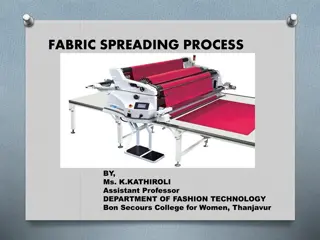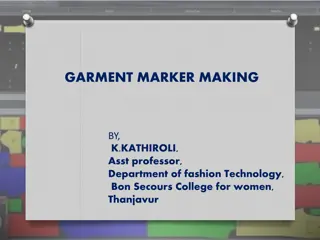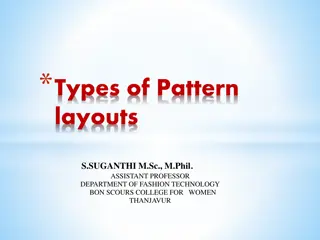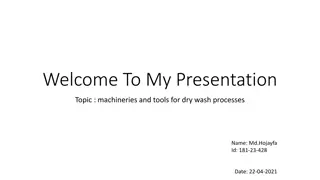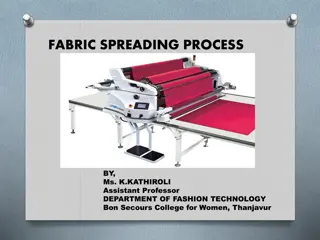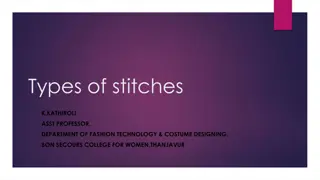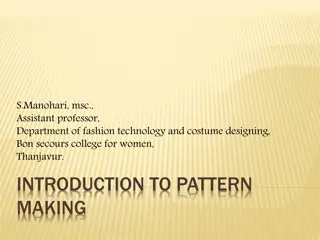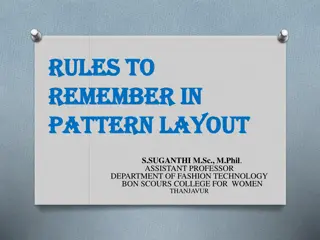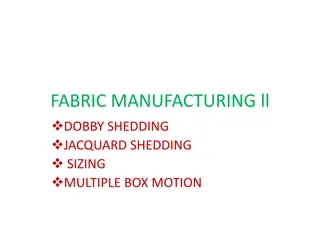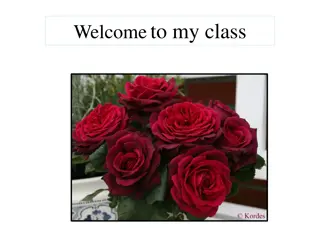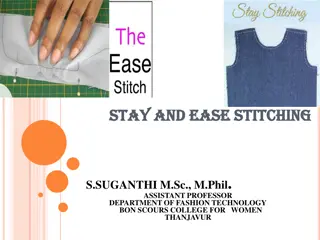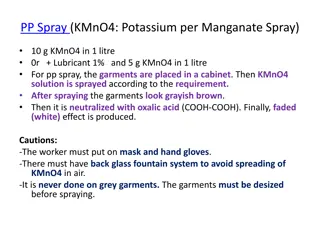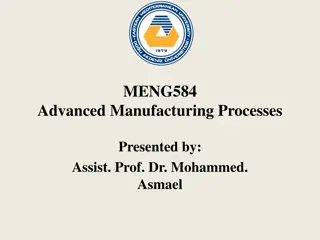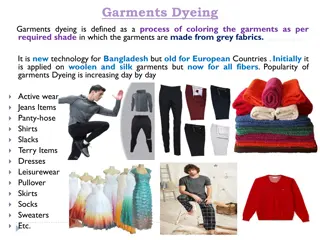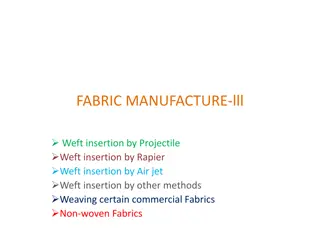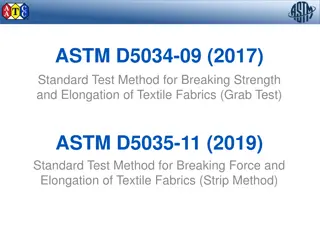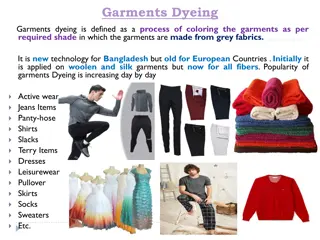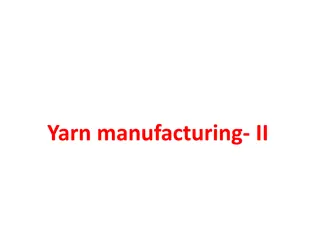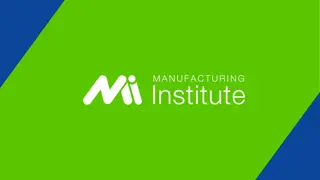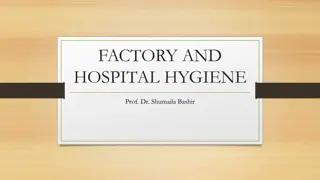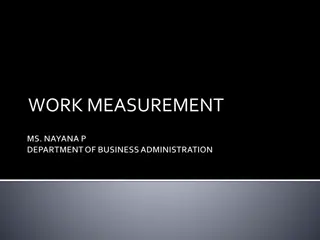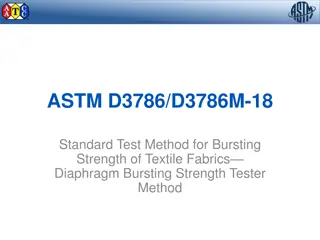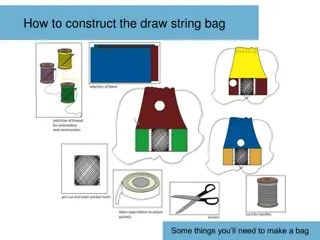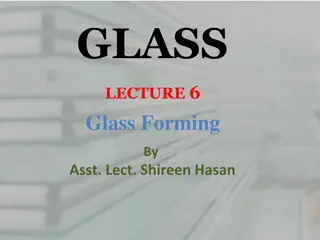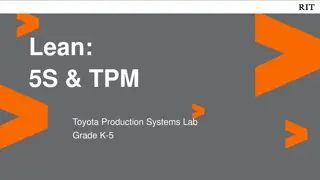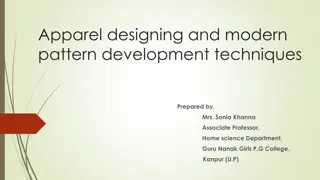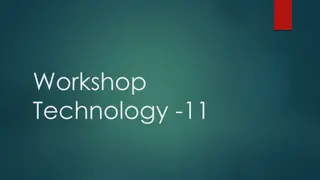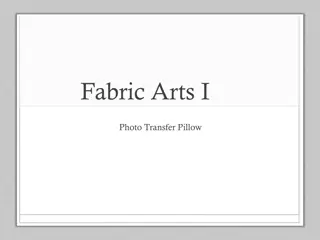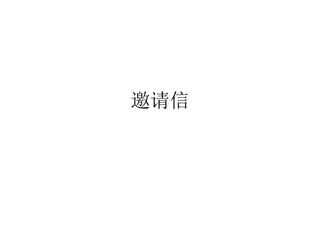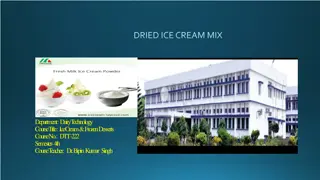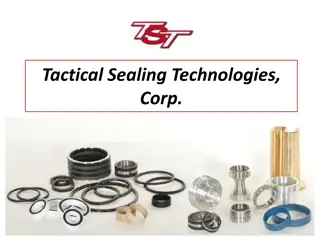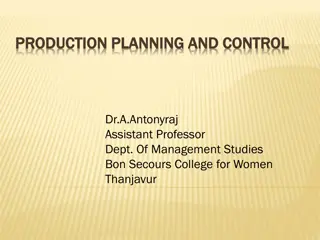Fabric Cutting Methods and Techniques for Garment Manufacturing
Fabric cutting is a crucial process in garment manufacturing that involves cutting fabrics according to patterns for quality garments. The cutting department follows a specific workflow to ensure precise cutting and marker planning. Different methods such as manual cutting with hand shears or power knives, as well as computerized cutting machines, are utilized in the fabric cutting process. Understanding the various cutting methods is essential for efficient production and maintaining quality standards in the apparel industry.
Download Presentation

Please find below an Image/Link to download the presentation.
The content on the website is provided AS IS for your information and personal use only. It may not be sold, licensed, or shared on other websites without obtaining consent from the author. Download presentation by click this link. If you encounter any issues during the download, it is possible that the publisher has removed the file from their server.
E N D
Presentation Transcript
FABRIC CUTTING BY: K.KATHIROLI ASST PROFESSOR,DE PARTMENT OF FASHION TECHNOLOGY AND COSTUME DESIGNING BON SECOURS COLLEGE FOR WOMEN,THANJAVUR
FABRIC CUTTING Cutting department is one of the most essential sections for garment manufacturing in the apparel industry. The fabric cutting is started after completing the fabric spreading. In cutting section, fabrics are cut according to the pattern. Perfect fabric cutting depends on the method of cutting and marker planning. For making quality garments they have to follow a working procedure of cutting department to continue their work
FABRIC CUTTING FLOW CHART Take the fabric from store Check the fabric Fabric spreading Marker setting on lay Fabric cutting Numbering Cutting quality check Storing & Bundling Bundles are sending to sewing section for bulk production Received the fabric from dyeing finishing Received the cutting ratio from apparel merchandiser Make the cutting quantity plan Lay planning Marker making Make marker ratio Decide the quantity of fabric spreading Fix the number of lay per cutting
METHODS OF CUTTING Fully Manual Fabric Cutting Methods Computerised Methods of Cutting Machine
MANUAL CUTTING METHOD Hand shears Hand shears are commonly utilised for cutting single or double fabric plies. The lower blade passes under the plies; however, the consequent distortion of the fabric is temporary and accurate cutting to the line can be attained only with practice. The major drawback in this method is that it is a time intensive one and incurs a higher labour cost per garment Short knife It pierces through the fabric; 10 to 12 fabric layers could be accurately cut. Heavy weight or denser fabrics have to be used for cutting using this short knife as it distorts several fabric layers while cutting through the fabric.
MANUALLY OPERATED POWER KNIVES: Portable power knives are normally moved manually through a lay by means of an operator. Two main kinds of power knives are vertical straight knives and round knives. Construction- wise, both the knives have a base plate, power system, handle, cutting blade, sharpening device and blade guard. The round knives operate with a single force as the circular blade makes contact with the fabric, but the vertical knives cut with an up-and-down action. A straight blade will always maintain a perpendicular contact with the lay (90 ) so that all the fabric plies in a spread could be cut at the same time. However, this will not be the case for a rotary knife blade as it contacts the spread at a certain angle. In both cases, the fabric that has to be cut is kept stationary and the knife blade fixed on the machine is moved by an operator to cut the fabric
THE BASIC ELEMENTS OF MANUALLY OPERATED POWER KNIVES ARE GIVEN BELOW: Knife blades Knife blades have a major influence on the quality of the cut. The performance of the knife blades are influenced by factors such as the blade edge, surface texture of the blade, fineness of the blade edge and blade composition. Blade edges may be straight with a flat surface, saw- toothed, serrated or wavy surface. Straight edge blades are used for general- purpose, serrated blades to reduce heat generation during cutting, wavy edges for cutting plastics and vinyl, and saw-type blades for cutting canvas. Base plate It supports and balances the equipment. It guides the knife along the cutting table and raises the spread off the table for contact with the blade. It is normally supported by bearing rollers at the bottom to facilitate easy movement of the base plate.
Power system The power required to cut a lay depends on the lay height and fabric weight (grams per square metre, GSM). The motor horsepower determines the cutting power of the blade; higher horsepower increases machine power as well as the motor weight. Sharpening devices Blades become blunt very quickly while cutting higher spread height or heavy weight fabrics which leads to frayed or fused edges. Sharpening devices such as emery wheels, abrasive belt sharpeners or stone could be used on the machine. Handle It is used to guide and impel the knife through the spread. The operator stabilises the fabric plies on the other hand, which is ahead of the knife to prevent bunching of the fabric.
STRAIGHT KNIFE FABRIC CUTTING MACHINE This is the most frequently used equipment for cutting garments in bulk. It comprises a base plate, vertically moving blade, an upright, a motor for providing the power for cutting the fabric plies, a handle for the cutter to direct the blade, and a sharpening device. Typically, the height of the knife blade varies from 10 to 33 cm and strokes vary from 2.5 to 4.5 cm. The straight knife is versatile, portable, cheaper than a band knife, more accurate on curves than a round knife, and relatively reliable and easy to maintain. In a few cases, a straight knife system is used as the preliminary process to cut the lay and then a band knife is used for accurate cutting as the final process.
SERVO ASSISTED STRAIGHT KNIFE CUTTING MACHINE: development from a straight knife machine has a travelling suspension system which supports the knife from the top, hence heavy base plate and rollers could be changed with a small, flat base These servo knife systems provide a higher degree of cutting precision than the previous version of unsupported straight knife systems, with the requirement of less operator skill.
ROUND KNIFE CUTTING MACHINE The basic elements of a round knife are analogous to a straight knife except it has a round blade. The blade diameter varies from 6 to 20 cm. Round knives are not appropriate for cutting curved lines especially in high lays as the circular blade could not cut all the plies at the same point as well as the same time as in a vertical blade. Hence, it could be utilized only for cutting straight lines rather than curved ones.
BAND KNIFE CUTTING MACHINE: It is normally engaged for accurate cutting of garment components. It consists of an electrically powered motor and a constantly rotating steel blade mounted over it . In this cutting system, the knife is stationary which moves through a small slot provided in the table and the fabric has to be moved manually to the blade area for accurate cutting.
FABRIC DIE CUTTING MACHINE The die is a knife blade in the profile/shape of a pattern margin, including notches . It involves forcing a firm blade through a fabric lay. Free-standing dies normally have two categories. One kind is a strip steel, which cannot be sharpened and must be replaced when worn and another one is forged dies, which can be resharpened but the cost is five times higher than strip steel. The position of the tie bars, which hold the die determines the depth of the cut. Free-standing gives higher accuracy of cutting and is used for cutting the small components of larger garments like collars and pockets.
COMPUTER CONTROLLED KNIFE CUTTING This method gives the most precise and accurate cutting at high speed. The complete setup of a computerised cutting system is shown in Figure-3. A characteristic computerised cutting system has nylon bristles at the top of the cutting table to support the fabric lay, which is flexible enough to allow penetration and movement of the blade through it. It also allows passage of air through the table to produce a vacuum for decreasing the lay height. The frame/carriage supporting the cutting head has two synchronised servo-motors, which drive it on tracks on the edges of the table. A third servo-motor keeps the cutting head at an accurate position on a beam through the width of the carriage. The cutting head includes a knife, sharpener and a servo-motor to rotate the knife to position it at a tangent to the line of the cut on curves. An airtight polyethylene sheet could be spread over the top of the lay to facilitate vacuum creation in the lay to reduce the lay height. A control cabinet houses the computer and the electrical components required to drive the cutter, its carriage and the vacuum motor.
An operator spreads the fabric lay on a conventional cutting table or cutting table equipped with air flotation or conveyorised cutting table. Perforated paper is spread below the bottom fabric ply to support it during cutting as well to avoid distortion during moving to the cutting table. After loading the disc having the marker plan into the computer, the operator positions the cutting head s origin light over the corner of the spread (reference point). A motorised drill at the back of the cutting head provides drill holes as required and facilities are available to cut the notches as well. The maximum height is usually 7.5 cm when compressed, with the height before compression, and hence the number of plies, being based on the nature of the fabric.
FABRIC LASER CUTTING MACHINE laser produces a beam of light that could be focused into a very small point (0.25 mm) to produce high energy density and result in localised increase in temperature. In this system, cutting takes place by way of burning, melting and vaporisation. The limited depth of fabric cutting (single or two plies) is the major drawback of this system. The cutting system comprises a stationary gas laser, a cutting head carrying a system of mirrors to reflect the laser beam to the cutting line, a computer which operates the entire system and a system for removing cut parts from the conveyor carrying the single ply of fabric
WATER JET FABRIC CUTTING MACHINE high velocity, small diameter stream of water is generated by applying high pressure water to a nozzle. The high pressure water jet acts as a means to cut the fabric, tearing the fibers on impact. As the water jet penetrates succeeding plies in a spread, the energy decreases and cutting capability is also reduced. The water jet spreads out and the cutting point becomes wider at the bottom of the lay. There is a problem of water spotting, wet edges and inconsistent cutting quality.


